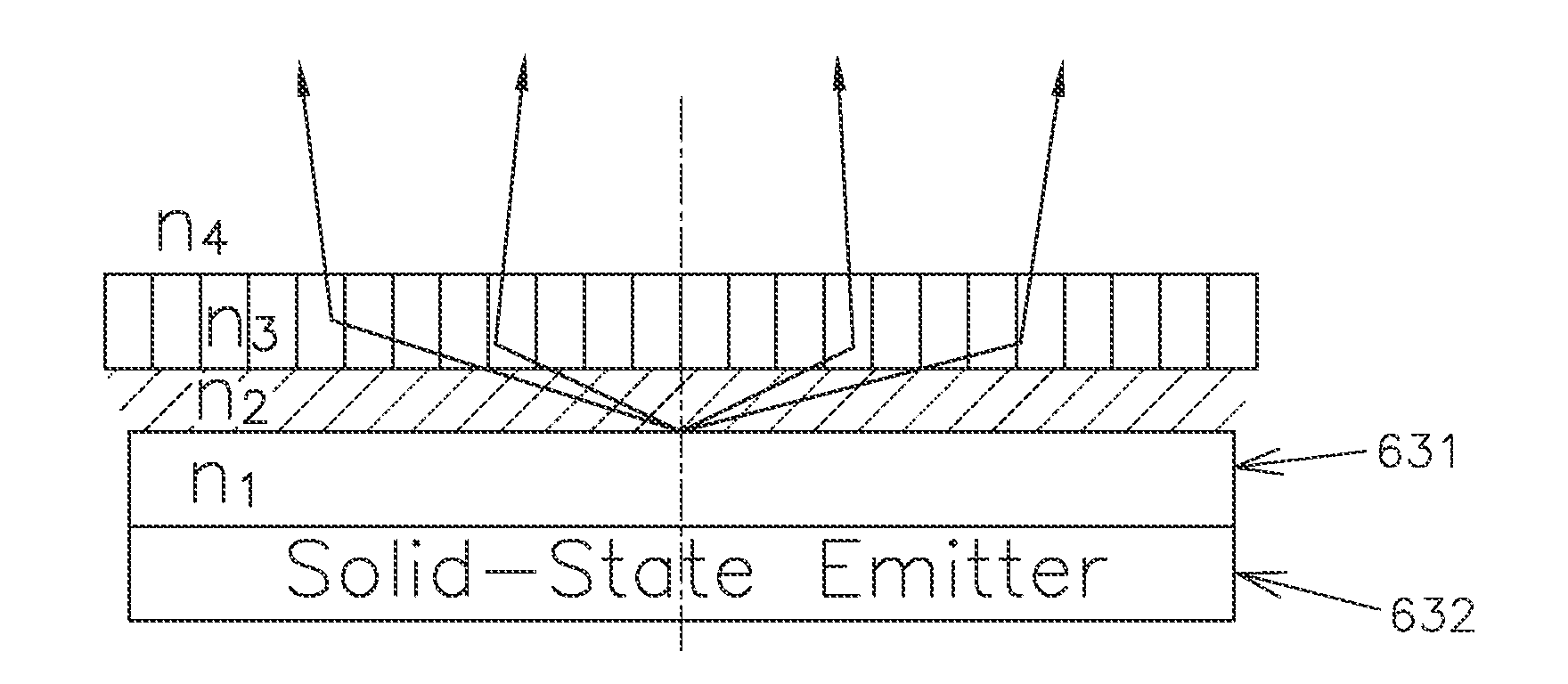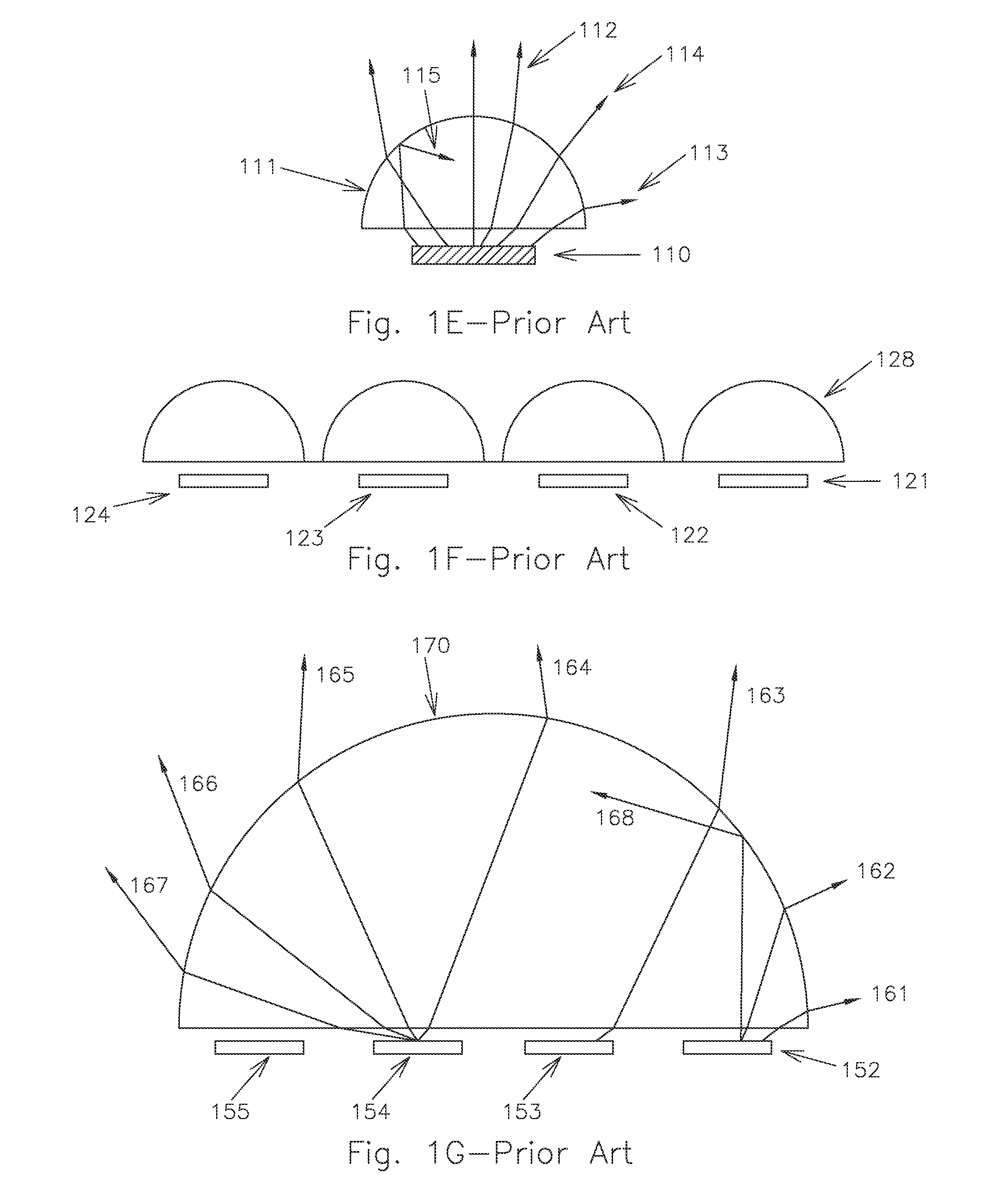Nano-Structured Lens for Collimating Light from Surface Emitters
a surface emitter and lens technology, applied in the field of optics, can solve the problems of large lenses are also expensive to manufacture, and achieve the effects of reducing power consumption, heat generation, cost and size, and reducing the compactness benefits of leds
- Summary
- Abstract
- Description
- Claims
- Application Information
AI Technical Summary
Benefits of technology
Problems solved by technology
Method used
Image
Examples
Embodiment Construction
[0020]The present invention utilizes one or more patterned nano-structures which act as a compact lens to efficiently collimate the otherwise spread emission from a light emitting surface, by coherently scattering high-angle light that would be typically wasted with geometric lenses, in the forward direction. Referred to hence forth as a “nano-structured lens”, the present invention's primary functional advantages over geometric lenses are that it is more able to collimate high-angle light and can be placed close to the light emitting surface, to couple energy from the near-field. The nano-structured patterns form a roughly one-dimensional or two-dimensional lattice of index contrast and can be simplistically viewed as an array of holes or higher index pillars in a preferably transparent, low loss medium that is several wavelengths thick. The resulting light pattern in the far-field is the collective interference pattern created by a large number of scattering centers arranged in a ...
PUM
 Login to View More
Login to View More Abstract
Description
Claims
Application Information
 Login to View More
Login to View More - R&D
- Intellectual Property
- Life Sciences
- Materials
- Tech Scout
- Unparalleled Data Quality
- Higher Quality Content
- 60% Fewer Hallucinations
Browse by: Latest US Patents, China's latest patents, Technical Efficacy Thesaurus, Application Domain, Technology Topic, Popular Technical Reports.
© 2025 PatSnap. All rights reserved.Legal|Privacy policy|Modern Slavery Act Transparency Statement|Sitemap|About US| Contact US: help@patsnap.com



